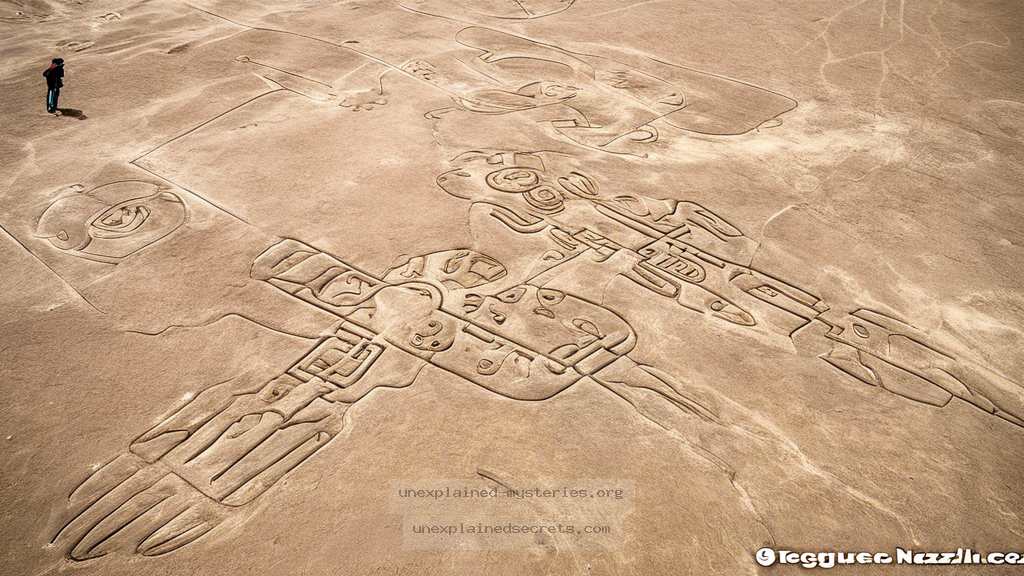What Secrets Lie Behind the Mysterious Nazca Lines of Peru?
What Secrets Lie Behind the Mysterious Nazca Lines of Peru?
The Nazca Lines, an array of geoglyphs etched into the arid landscape of southern Peru, have puzzled scientists, archaeologists, and enthusiasts for decades. Spanning over 1,000 square kilometers, these enormous designs include various shapes, including animals, plants, and geometric figures. What makes the Nazca Lines particularly captivating is not just their scale but the mystery surrounding their purpose and creation. Why were they made? How were they constructed? And what significance did they hold for the ancient Nazca culture? This exploration into the Nazca Lines is crucial not only for understanding ancient civilizations but also for unveiling the secrets of our past that continue to elude us today.
Historical Context of the Nazca Lines
The Nazca Lines were created by the Nazca culture between 200 BCE and 600 CE. The Nazca civilization was known for its advanced agricultural practices, vibrant ceramics, and intricate textiles. Their society flourished in the desert region, where they developed sophisticated irrigation systems to cultivate crops in an otherwise inhospitable environment. The lines themselves were first documented in the early 20th century, primarily through aerial photography, leading to widespread intrigue and speculation about their origins and purposes.
As early as the 1930s, pilots flying over the region began to notice these enormous geoglyphs, which have since become a UNESCO World Heritage site. The lines are made by removing the top layer of reddish-brown iron oxide-coated rocks to reveal the lighter-colored soil beneath. This technique creates a stark contrast that remains visible for centuries. While many believe the lines served ritualistic or astronomical purposes, the exact reasons behind their creation remain a topic of ongoing research and debate.
Core Concepts: Purpose and Theories
Several theories attempt to explain the purpose of the Nazca Lines, each offering a unique perspective on these ancient markings. Some of the most prominent theories include:
- Astronomical Alignments: Some researchers propose that the lines served as an astronomical calendar, with certain figures aligning with celestial bodies during solstices and equinoxes. This theory suggests that the Nazca people might have used the lines to track agricultural cycles based on the movements of the sun and stars.
- Religious or Ceremonial Significance: Another theory posits that the lines were part of a religious practice, perhaps as a way to communicate with deities or to ensure rain and fertility in the region. The large figures, such as the hummingbird and the monkey, may have held spiritual significance, invoking the presence of these creatures in their rituals.
- Water Cults: Some scholars argue that the Nazca Lines may relate to water cults, as water was a precious resource in the arid landscape. The lines could have been part of rituals aimed at attracting rain or acknowledging water sources.
- Social or Political Symbols: The creation of the lines may have been a display of power or unity among the Nazca people, reinforcing social or political structures within their society.
Practical Implications: Evidence and Investigations
The study of the Nazca Lines has evolved over the years, with various archaeological investigations providing insight into their construction and purpose. Techniques such as aerial photography, satellite imagery, and ground surveys have enhanced our understanding of the lines’ intricacies. For example, the use of drones has allowed researchers to map the lines in greater detail than ever before.
One notable investigation was led by Dr. Maria Reiche, a German mathematician and archaeologist who dedicated her life to studying the Nazca Lines in the 1940s. Reiche’s meticulous work established many foundational theories about the lines and their potential astronomical alignments. Her research suggested that several of the geoglyphs corresponded with celestial events, but the full extent of their significance remains a mystery.
Recent studies have also employed ground-penetrating radar (GPR) to explore the subsoil beneath the lines, revealing additional patterns and structures that may provide more context about the culture that created them. Such technological advances continue to shed light on the enigmatic Nazca Lines, but many questions remain unanswered.
Alternative Perspectives: The Role of Culture and Environment
While many theories focus on astronomical or ceremonial significance, alternative perspectives emphasize the influence of the environment and cultural practices on the creation of the Nazca Lines. The harsh desert landscape likely shaped the Nazca people’s worldview, leading them to create large-scale geoglyphs as a form of expression or as a means to navigate their environment.
Moreover, the lines may not have been intended for viewing from the sky but rather for those walking on the ground. This perspective changes our understanding of the lines’ purpose and challenges the notion that they were solely meant for celestial navigation. It’s possible that the lines served as pathways or rituals for the Nazca people, connecting various sites of significance within their culture.
Common Misconceptions and Clarifications
As with many ancient mysteries, there are several misconceptions surrounding the Nazca Lines that deserve clarification:
- Aliens and Extraterrestrial Theories: One of the most popular theories is that the Nazca Lines were created by extraterrestrial beings as landing strips or messages. While this idea captivates the imagination, there is no archaeological evidence to support this claim.
- Single Purpose or Figure: Many people believe the lines served a singular purpose or represented one specific idea. In reality, the Nazca Lines encompass a diverse range of figures and potential meanings, suggesting a complex cultural significance.
- Preservation of the Lines: Some assume that the lines are impervious to damage due to their age. However, threats such as urbanization, climate change, and tourism pose risks to their preservation.
Best Practices for Investigation and Study
For researchers and enthusiasts seeking to explore the Nazca Lines, adhering to best practices is essential for preserving both the site and its mysteries. Here are some guidelines:
- Use Technology Responsibly: Employing drones and satellite imaging can enhance research without disturbing the lines themselves. Ground surveys should be conducted with minimal impact on the environment.
- Engage with Local Communities: Involving local populations in research can provide valuable insights and foster a sense of stewardship for the lines.
- Promote Sustainable Tourism: Educating visitors about the significance of the Nazca Lines can help protect the site from degradation while allowing for appreciation of its cultural heritage.
Future Developments and Ongoing Research
The mystery of the Nazca Lines continues to intrigue researchers, with ongoing studies yielding new insights. Recent advancements in technology, such as artificial intelligence and machine learning, are being utilized to analyze patterns within the lines and their geographical context. For example, researchers are using AI to compare the Nazca Lines with other geoglyphs worldwide, potentially uncovering common cultural themes.
Furthermore, interdisciplinary collaborations between archaeologists, astronomers, and environmental scientists are paving the way for a more comprehensive understanding of the lines. As research continues, new discoveries may redefine our comprehension of the Nazca culture and its profound legacy.
Conclusion: The Enduring Enigma of the Nazca Lines
The Nazca Lines represent an enduring enigma of ancient human creativity and cultural expression. While numerous theories exist to explain their purpose, the truth may be far more complex than we currently understand. As researchers delve deeper into the mysteries of these geoglyphs, they not only uncover secrets of the past but also challenge our assumptions about ancient civilizations and their relationships with the environment.
As we continue to investigate and understand the Nazca Lines, it becomes evident that the quest for knowledge is a journey without a definitive endpoint. The lines, with their intricate designs and mysteries, invite us to explore the profound connections between humanity and the cosmos, leaving us with more questions than answers. In this way, the Nazca Lines are not merely a relic of the past; they are a reminder of our collective curiosity and the ever-evolving story of human history.
Other Articles
Recent Posts
- What Happened to Flight MH370? The Conspiracy Theories That Still Haunt Us
- What Secrets Lurk Within the Walls of the Infamous Trans-Allegheny Lunatic Asylum?
- What Evidence Supports the Existence of Bigfoot in the Pacific Northwest?
- What Happened to the Indus Valley Civilization? Unraveling the Mysteries of Ancient Urban Life
- Can Telepathy Be Scientifically Proven Through Laboratory Evidence?







